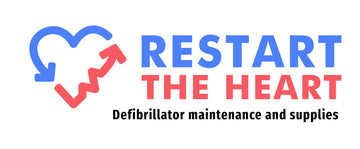The Role of Defibrillators in Ensuring Safety for Students
Sudden cardiac arrest (SCA) occurs when the heart abruptly stops beating. Ventricular fibrillation (VF) is frequently to blame. When the electrical mechanism of the heart malfunctions, blood stops flowing to the brain, heart, and the rest of your important organs.
Bystanders who start CPR and defibrillation as soon as possible can maintain oxygenated blood moving throughout the body, ultimately saving lives.
Although sudden cardiac death (SCD) is alarming and makes a lasting impression on survivors regardless of age, it is more devastating when school-aged children are the victims. SCD may leave lasting wounds on families, schools, and communities.
In a school context, health and safety are crucial for various reasons. Working in any environment with young and possibly vulnerable individuals needs the appropriate level of safety assurance if they require medical assistance. That is why people must guarantee that defibrillators are widely available in schools.
Due to a few occurrences highlighting how prevalent cardiac arrest situations are, defibrillators have recently become a widely sought-after piece of equipment. It happened after many charities and campaigns raised public awareness about the hazards of heart-related illnesses.
Having defibrillators at your school might be the difference between life and death. A person's likelihood of surviving a cardiac arrest decreases by 10 per cent every minute. It's critical to have quick access to an AED if you wish to save a life.
What to Do If You Need to Use an AED on a Child
When using an AED maintenance on a child, the procedure is much like using one on an adult. If they pass out without warning and their respiration and pulse are absent, a cardiac arrest frequently causes this.
If individuals fall, they will frequently have short breaths, are breathing incorrectly, and have hearts that have stopped. If they show any of these symptoms, doing CPR and using a defibrillator as soon as possible is critical to their recovery.
The Difference Between Using an AED on Children and Adults
Using an AED on a child is something that many people are concerned about. However, there isn't much difference between resuscitating an adult and a child. The only method to save someone who has had a cardiac arrest is to utilise a defibrillator machine.
There is a significant difference only when providing CPR and AED therapy to newborns.
Place two fingers on the centre of their chest and pressure firmly at 100-120 beats per minute for newborns. Remove your fingers entirely once you've done this, enabling the chest to expand and oxygen to circulate throughout the body. You can also provide mouth-to-mouth oxygen support if you feel comfortable doing so.
Why Schools Need to Have Defibrillators
There are many reasons why your school should have defibrillators. These are the following:
- To assist in saving a life
- For the benefit of the local community. The sooner the defibrillator is activated, the better
- To instil trust in parents and guardians
- For the goal of teacher education and knowledge
Conclusion
AED-equipped schools have a much better SCA survival rate for kids and adults. It demonstrates that establishing a school-based AED program should be the foundation of every campus' emergency response preparedness to keep their community safe.
Restart the Heart is a trusted defibrillator supplier in Australia. We supply AED pads and batteries for all brands through fast delivery and great customer care. Order online today!

